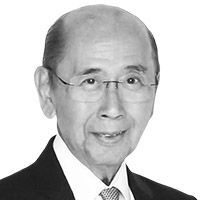Public-private partnerships in health

The headlines during this Christmas season regrettably dwell on the negatives, particularly in the political arena. Felicitously, there is one government agency who has decided to focus on the plight of the poor. In my humble opinion, the Department of Health led by Secretary Enrique Ona is on the right track in the spirit of Christmas. Last Tuesday, Dec. 13, the Third Philippine Health Outlook Forum was held under the auspices of the Department of Health (DOH), Union of Local Authorities of the Philippines (ULAP), the Philippine Business for Social Progress (PBSP) and the Zuellig Family Foundation. This meeting served as a venue for the discussion of public health issues. It aimed to provide a platform for generating ideas for collaborative action with DOH as the fulcrum. The primary issue was the pursuit of universal healthcare and the achievement of benchmarks for health conditions set in the Millennium Development Goals (MDG).
While the issues are generally considered a public charge, it is clear that they cannot be fully met by relying on public resources. And it is no longer a question of who pays because at the end of the day, it is the public who pays – whether it be direct payment for services or taxes or as a deduction from the wage packet. We know that regardless of how health care is funded, there isn’t much to go around. The relevant question then becomes how health care can be provided most efficiently given all these constraints.
This is why I applaud the DOH’s initiative to promote public-private partnerships (PPP) as a key component of its efforts to achieve these goals. While funding constraints are the obvious reason, cost efficiency is the primary driver. Experience worldwide has shown that PPP allows considerable leveraging of each partner’s resources and unique strengths, and results are often attained in less time, at lower cost, and with greater sustainability than the traditional model where the public sector goes it alone and the private sector merely acts as supplier of inputs.
Secretary Ona emphasized the importance of PPP in the government’s effort to achieve the country’s Millennium Development Goals in health through the Kalusugan Pangkalahatan Program. He noted that even though PPPs are currently focused on health facility enhancement, there also other areas where the private sector can come in.
PPP on the municipal level
As an example, the experience at the Zuellig Family Foundation (ZFF) has shown that to be the case. Since 2008, the Foundation has worked with 30 rural municipalities across the country, validating a Health Change Model in partnership with local health leaders. Anchored on the premise that health leadership is key to public healthcare reforms, the Foundation’s Health Change Model aims to help local chief executives, municipal health officers and other health professionals, and community leaders, improve health governance and make local health systems equitable, responsive and sustainable.
ZFF will focus its interventions in five regions of the country with the highest poverty incidence and the most serious health challenges – Mimaropa (Mindoro-Marinduque-Romblon-Palawan), Bicol Region, Eastern Visayas Region, Zamboanga Peninsula and the Autonomous Region in Muslim Mindanao (ARMM). Targeted health interventions are designed to improve health outcomes of the poor, measured against the MDGs. The results have been encouraging particularly in terms of declining infant and maternal mortality ratios or IMR and MMR.
If the Foundation Health Change Model can be implemented in all 498 municipalities of the five priority regions – representing a third of all municipalities in the country – the MMR would be down to 57 in 2015, as opposed to 248 in 2010. This will greatly influence the effort to reduce MMR in the country. On the other hand, if business-as-usual programs are implemented, the MMR will take 48 years before it attains the MDGs targeted for 2015.
DOH and PhilHealth on same page
The head of the agency’s PPP Task Force, Undersecretary Teodoro Herbosa, presented the DOH policy and legal framework for PPPs, stressing the concept of partnerships as a social contract with the Filipino people that should promote better health outcomes for all. Newly-appointed president and CEO of PhilHealth, Dr. Eduardo Banzon, also presented opportunities for partnerships in health financing, which should help improve utilization of benefits and enhance efficiency. Many commented on the enhanced cooperation between DOH and PhilHealt.
ICT in health
An obvious and urgent PPP potential was in the use of Information and Communications Technology (ICT). Private sector involvement can complement the resources – and address the requirements – of the DOH. From tagging, monitoring and rationalizing health facilities to establishing electronic medical records for claims management as well as the development of a much needed national data base, the use and impact of ICT in healthcare was emphasized as critical to the resolution of some of our most pressing and enduring health challenges.
During the first Philippine Health Outlook Forum, a DOH-Private Sector technical working group was formed. Their recommendations were presented last Tuesday – a perfect example of how the DOH can harness the resources and expertise of the private sector for such enabling programs as TeleHealth and Health Information Systems.
PPP and the pharma industry
Dr. Kenneth Hartigan-Go, executive director of the AIM Center for Asian Business Transformation, highlighted the opportunities for the pharmaceutical sector involvement in PPP in health. According to him, the pharmaceutical sector can be instrumental in improving access of the poor to medicines and health services. Examples of innovative solutions cited include health information technology, consumer empowerment through health literacy. “If properly motivated, pharmaceutical companies can share with the public sector market and management expertise such as product development, production process development, manufacturing, marketing, and distribution”.
PBSP support
Indicative of business sector interest, Mr. Rafael Lopa, Executive Director of the Philippine Business for Social Progress, outlined a strategy for coming up with “big solutions for big problems” anchored on the six building blocks of health – a framework espoused by no less than the World Health Organization. Mr. Lopa also stressed the need to form a broad alliance of health advocates and supporters to marshal resources for needed health interventions, similar to what the PBSP and corporate foundations have in the education sector and now known as the 5775 Movement.
LGU support
The presence of the president of the Union of Local Authorities of the Philippines, Gov. Alfonso Umali Jr. (Oriental Mindoro) also highlighted the interest and support of local government units (LGUs) for concrete and specific action items they can immediately work on, especially in the area of governance and capacity building. In the context of devolution, the Governor acknowledged the responsibility of provincial and municipal governments to address the health issues in their localities, as well as the need for technical assistance for various health programs in the LGUs.
As co-convenor of the Forum, Mr. Ernesto Garilao proposed the creation of technical working groups to follow through with next steps resulting from the discussions..
Despite the short notice given, more than 200 stakeholders from LGUs, academe, multilateral international organizations, foreign chambers, local and foreign corporations, non-government organizations, and civil society institutions attended the Forum at the AIM Conference Center. I am optimistic that PPP in Health as described above will succeed in the more immediate future as compared to the big ticket items programmed by other agencies.
- Latest
- Trending





























